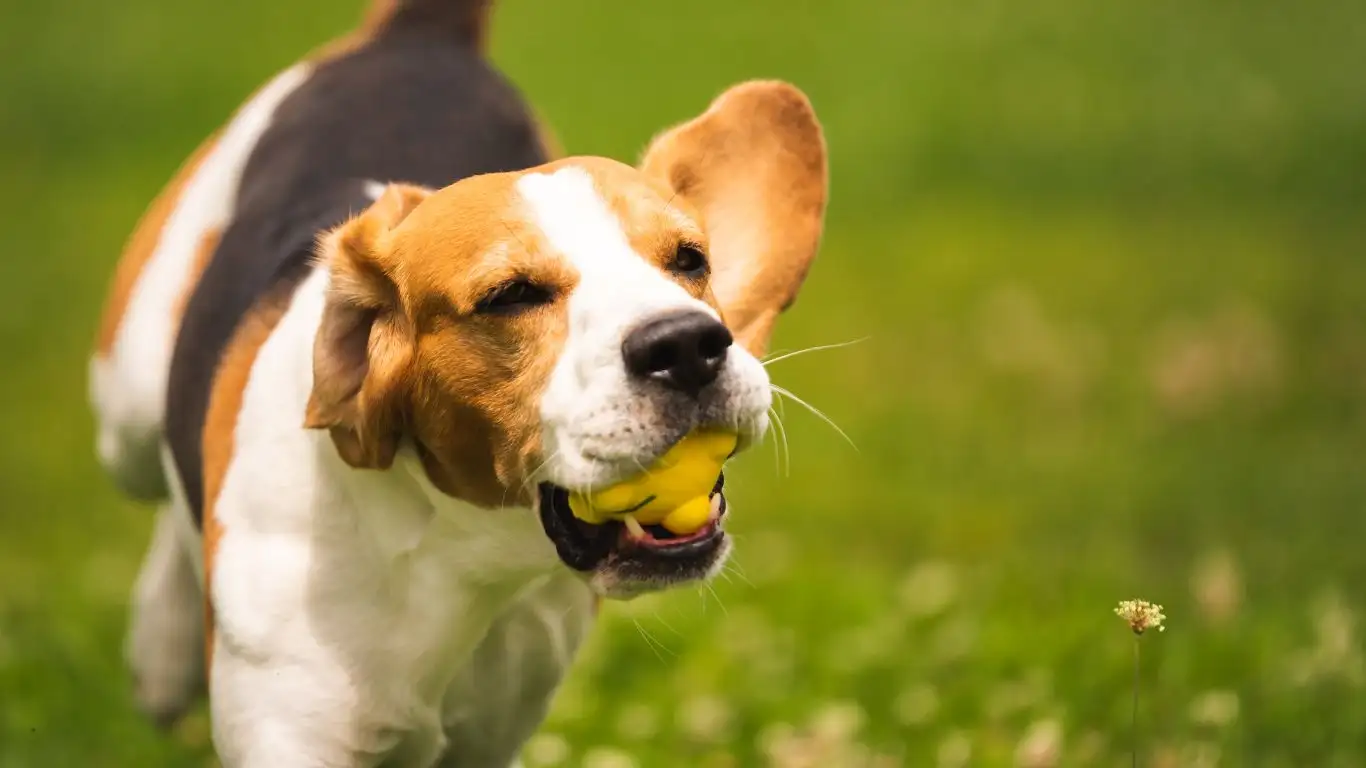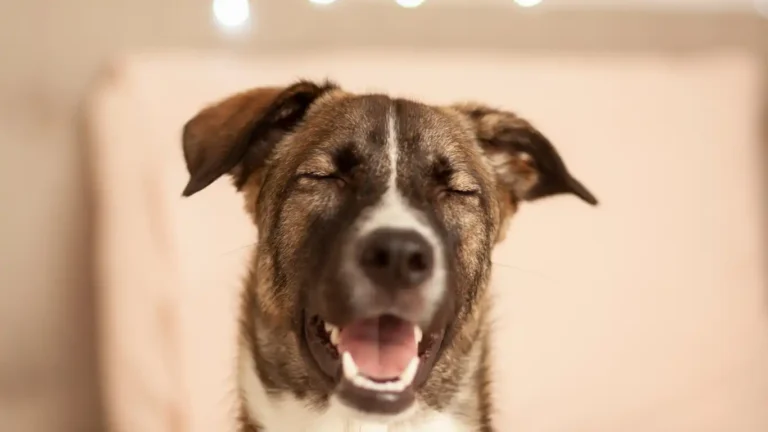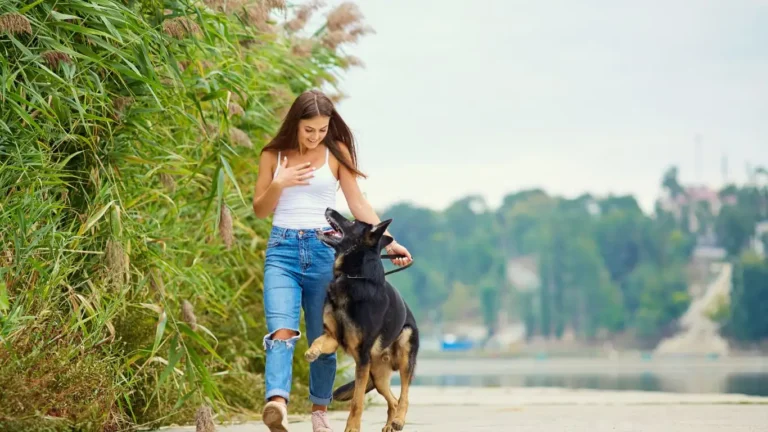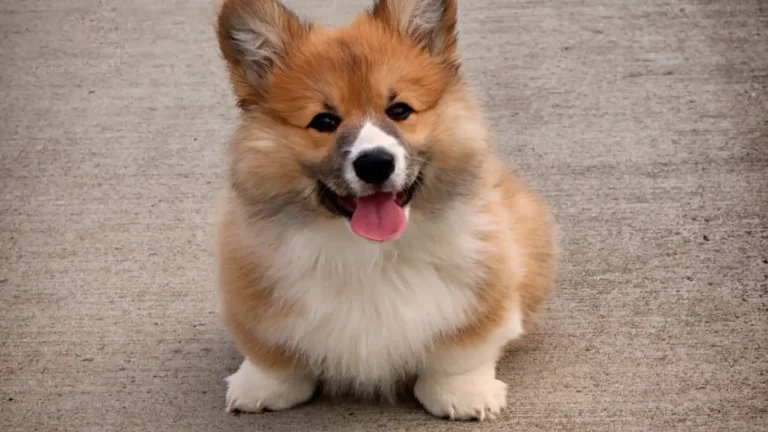How to Train a Dog to Remain Calm When Doors Open: Proven Tips That Work
Ever had your dog bolt for the door like it’s the 100-meter dash every time it opens? Yeah, me too—until I learned how to train a dog to remain calm when doors open. As a Canine-Assisted Therapy Trainer, this was one of the first behaviors I had to tackle, not just for safety, but also for the sanity of the therapy teams I work with. Nothing derails a session faster than a pup who thinks every open door is an invitation to explore the world solo. Whether you’re working with a high-energy rescue or a sensitive therapy dog in training, teaching calm behavior at thresholds is a total game changer.
Why Dogs Go Bonkers at the Door
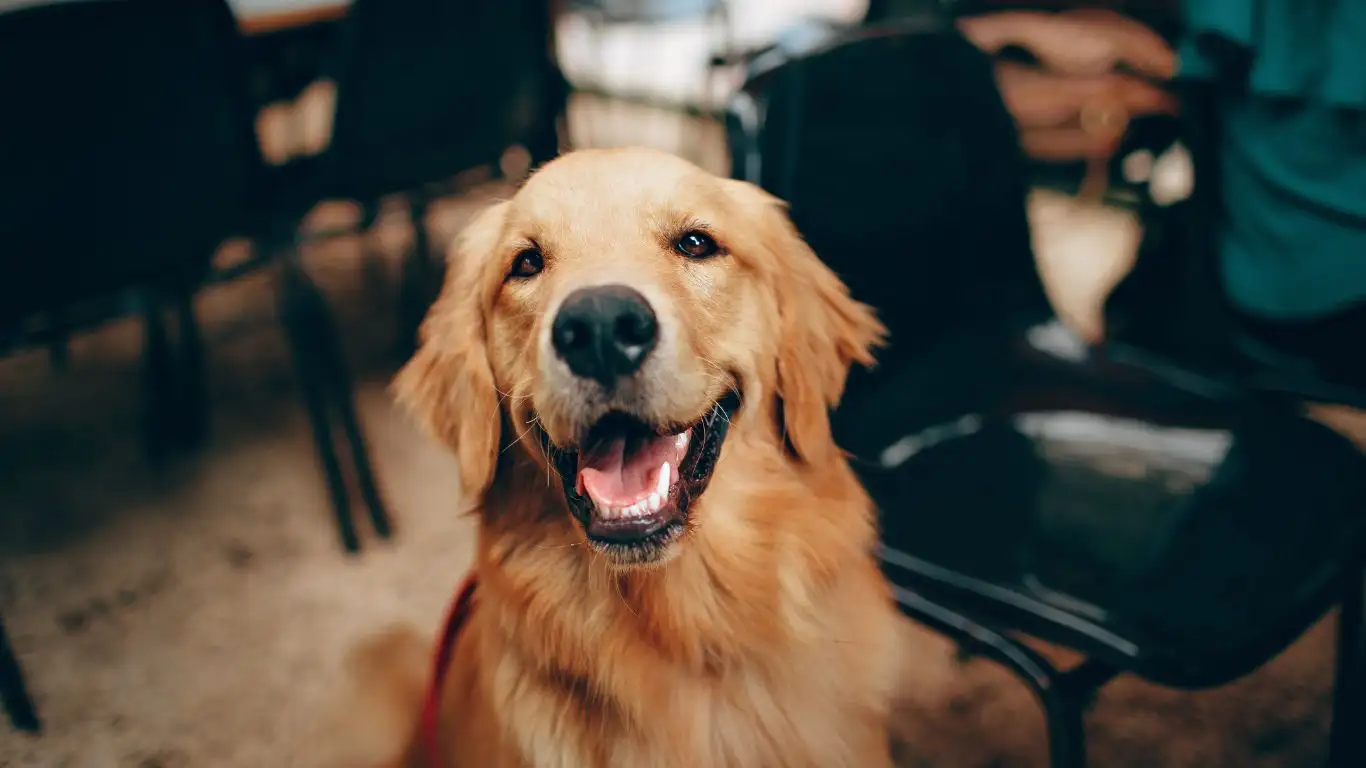
It’s Not Just About the Door
The door represents freedom, adventure, or the arrival of guests. For some dogs, it’s pure excitement. For others, it’s anxiety or fear of being left behind. In my experience, especially with therapy dogs, the motivation behind the behavior is key to understanding how to correct it. I once had a Labrador named Buddy who’d break into zoomies every time a door creaked open—it wasn’t disobedience; it was sheer overstimulation.
Impulse Control Is a Learned Skill
Most dogs don’t come pre-programmed with self-control. You’ve gotta teach it. Just like you’d help a child learn to wait their turn, dogs need guidance to master the art of chilling out. One of my go-to phrases? “Calm is a behavior too, and it needs rewarding.” That means we’re reinforcing silence, sitting, or staying put—even if it’s just for a second at first.
How to Train a Dog to Remain Calm When Doors Open
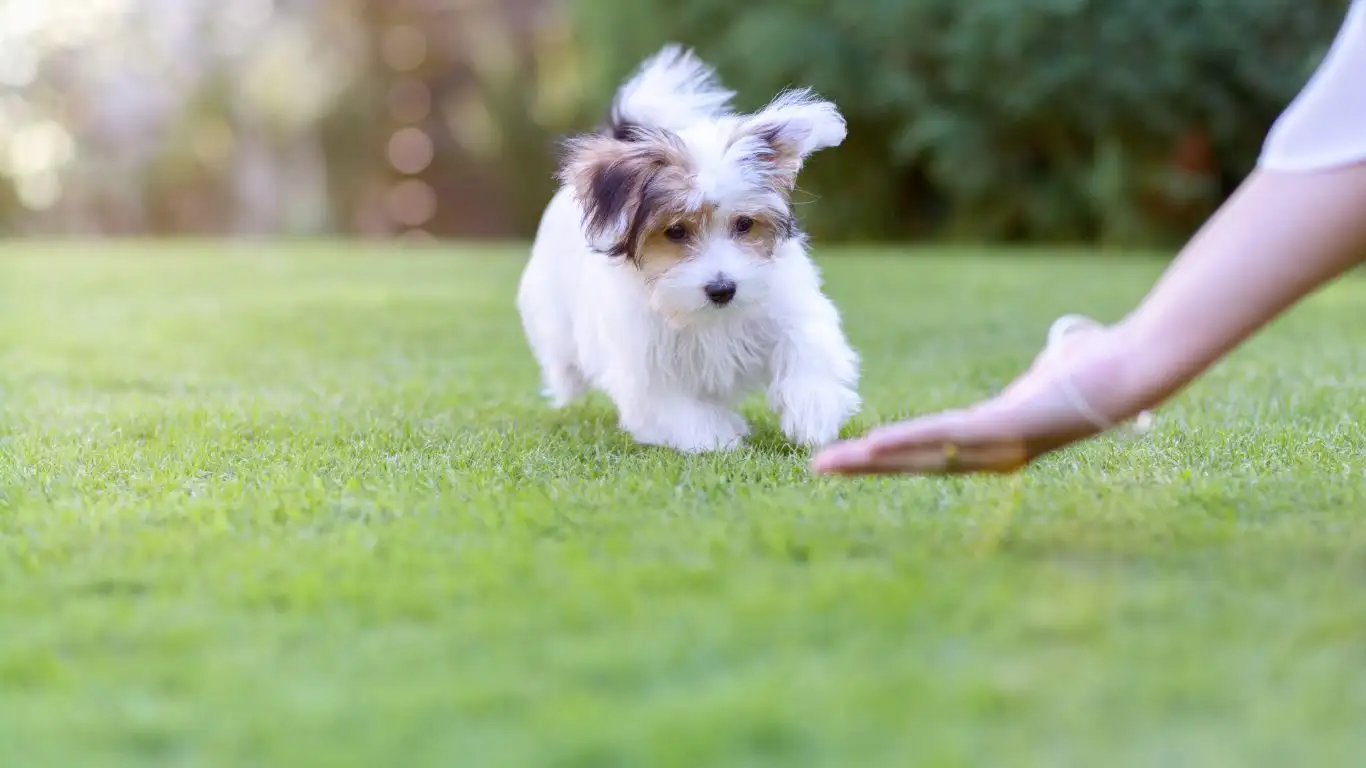
Step-by-Step Calm Door Training
Alright, let’s break it down into manageable steps. This is the method I use with my therapy dog trainees and my own pup at home. And trust me, consistency is your best friend here.
- Start with Sit-Stay Basics
Before even approaching the door, your dog should have a solid sit and stay command. Practice this in low-distraction environments first. Reward like your dog just won a medal every time they stay in place. - Move to the Door—But Don’t Open It
Leash your dog and walk toward the door. If they get too hyped, pause. Wait for calm, then keep moving. Do this until you can reach the door with a chill pup. - Crack the Door—Just a Peek
Now here’s the magic part. Open the door just an inch. If your dog lunges or gets excited, close it. No yelling, just calmly shut the door. This teaches them that calm = open door. Excitement = door stays closed. - Gradual Openings
Slowly increase how far you open the door each time your dog remains calm. Make this a game. If they stay put when the door’s wide open, toss a treat their way or even better, release them with a command like “Okay!” so they can step out under control. - Practice with Real-Life Scenarios
Once you’ve nailed it with just the two of you, start adding distractions—friends ringing the bell, deliveries, or your neighbor’s dog barking. Repetition builds confidence. One of my therapy trainees, a golden retriever named Scout, went from door-dasher to door-gentleman in just two weeks with daily practice.
Training Tips from the Therapy Dog World
From the therapy trenches, here’s what works best:
- High-value treats: I’m talkin’ turkey bits or freeze-dried liver. Make it worth their while.
- Leash for control: Especially during early stages, a leash helps prevent that accidental dash.
- Use a release word: This gives your dog permission to move. It’s a game-changer in giving them clarity and confidence.
- Keep sessions short and sweet: End on a high note. If it gets frustrating, take a break. Your energy affects theirs big time.
What Not to Do When Training for Calm Door Behavior
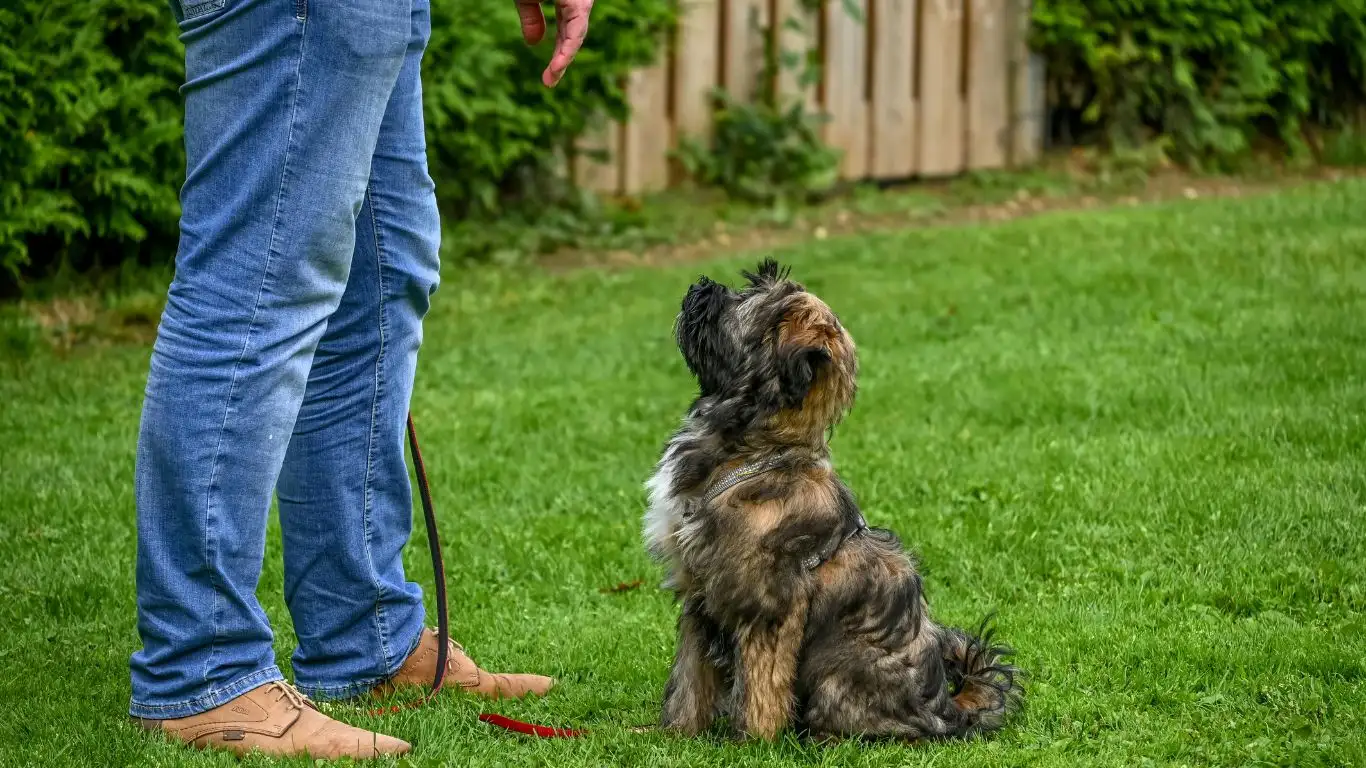
Avoid These Common Mistakes
Been there, done that—and learned the hard way. Here’s what to steer clear of:
- Yelling or scolding: This often just amps up the energy. Calm corrections work better.
- Inconsistency: If you let it slide “just this once,” your dog gets mixed signals. Every door moment is a training moment.
- Not setting boundaries: Dogs thrive on structure. A clear boundary (physical or verbal) gives them something to respect.
Training a calm response to an open door isn’t just a cute trick—it’s a life skill, especially for therapy dogs working in schools, hospitals, or assisted living environments. You want reliability and composure, not chaos.
Building on Calm: Reinforcement and Real-Life Practice
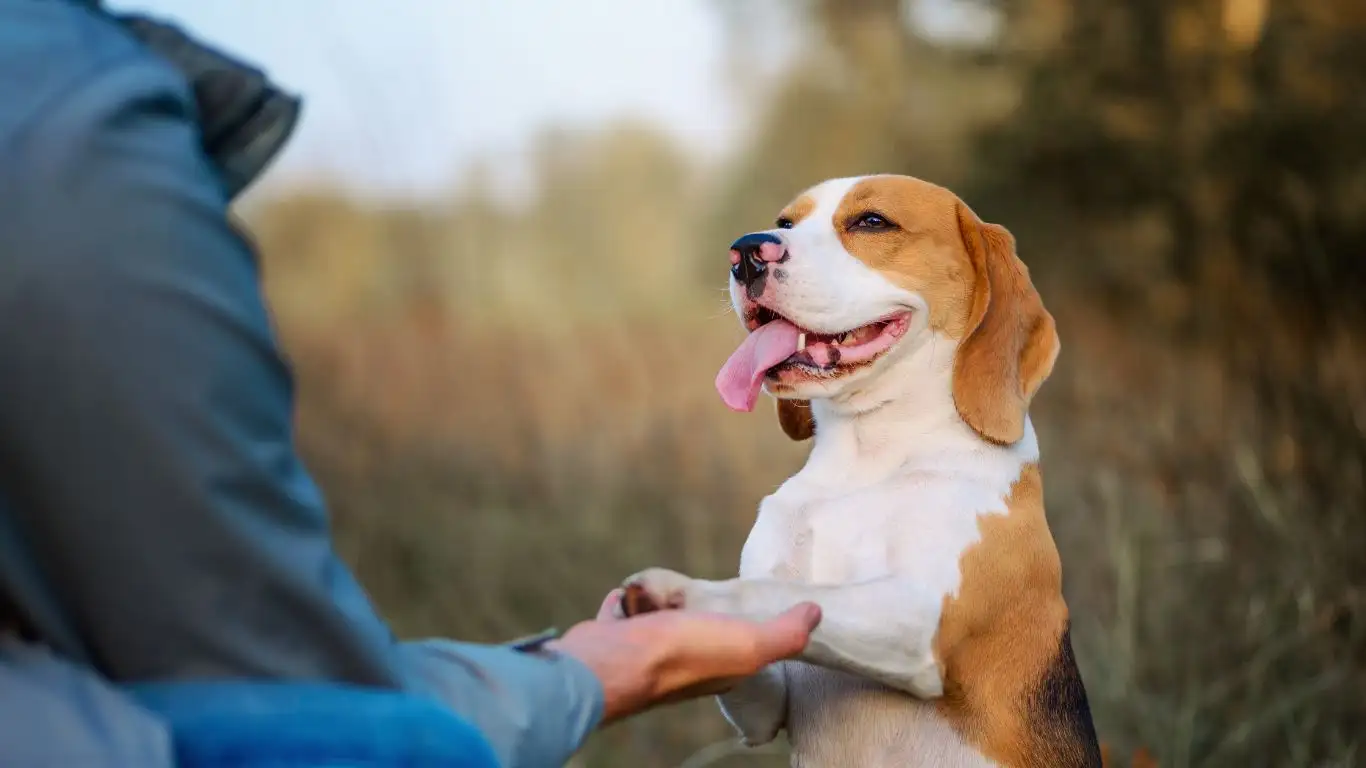
Consistency Is Your Superpower
If there’s one thing I’ve learned from years of training therapy dogs, it’s this—your consistency is everything. I had a client, sweet woman named Karen, who was training her doodle, Millie, to be a therapy dog for hospital visits. Millie had a door-dashing habit that was more like a full-on jailbreak. We made serious progress simply by sticking to the same routine every single day. Karen practiced the door exercise every morning after coffee and every evening before dinner. The calm door behavior became second nature for Millie within weeks. Dogs thrive on predictable routines—they pick up patterns faster than we think.
Real-Life Practice Makes Permanent
Once your dog has the basics down in a quiet home setting, it’s time to shake things up. Controlled distractions are a fantastic way to test and reinforce the behavior. Try these:
- Have a friend ring the doorbell while your dog practices staying calm
- Use props like grocery bags or a backpack to simulate your real exit routine
- Try training at different doors—garage, back patio, side entry
I remember working with a golden named Riley who was perfect at the front door but turned into a pogo stick at the garage door. Moral of the story? Dogs don’t always generalize well—each door might need its own mini-training session.
How to Train a Dog to Remain Calm When Doors Open During Guest Arrivals

When Visitors Are Part of the Test
Let’s talk guests. This is where calm door behavior gets real. A visitor at the door is like Christmas morning for some dogs—and for others, it’s a stress bomb. Either way, it’s a prime opportunity to apply what your dog’s learned.
Here’s a technique I’ve used for dozens of therapy dog prep sessions:
- Set the scene: Leash your dog before the guest arrives. Have treats handy and ask your guest to play along.
- Reward calm immediately: If your dog sits or stays without being asked, that’s jackpot behavior. Reward the calm before the chaos begins.
- Use a visual boundary: Place a rug or mat a few feet from the door and train your dog to stay on it while the door opens. This small cue gives your dog a “job” to focus on.
One of my most memorable sessions was with a beagle named Hank who absolutely lost it when anyone knocked. After three weeks of mat training with mock visitors, he transformed into the dog who would politely sit back and wait for his cue. Hank ended up passing his therapy certification on the first try.
Got Kids or Roommates? Loop Them In
Nothing wrecks a good training routine faster than someone in the household not following the plan. If you’ve got roommates, partners, or kids who come and go, get them involved. Teach them the training steps and make sure they know what calm behavior you’re reinforcing. A simple “pause until the dog sits” rule can go a long way. I often give families a written checklist to tape near the door—just a visual reminder to stay consistent.
Tools and Extras That Can Help
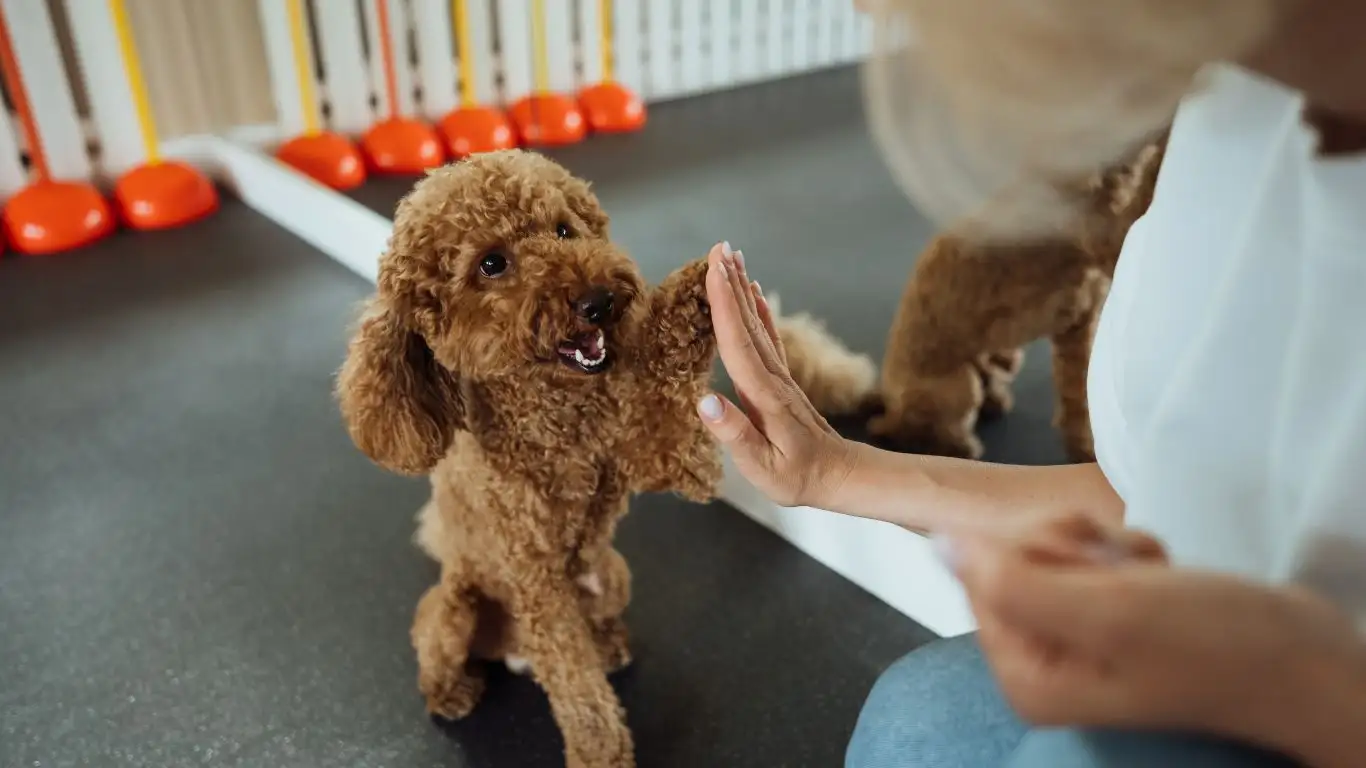
Helpful Gear for Calm Door Training
While you absolutely don’t need fancy equipment, there are a few tools that can really help, especially in the early stages. Here are some I keep in my training kit:
- Clicker: If you’re into clicker training, this is great for marking calm behavior the moment it happens.
- Long leash: Allows you to control space while still giving your dog a sense of freedom to choose the right behavior.
- Treat pouch: Having rewards easily accessible helps you mark good behavior without fumbling around for snacks.
- Baby gate or x-pen: Helpful for setting up boundaries around doors while training. I used one for my own dog, Maple, during her early months and it was a lifesaver.
Using Verbal Cues Strategically
Your cue words matter. Use calm, low-energy tones when giving commands at the door. Words like “wait” or “stay” should be short, clear, and always followed by a release cue like “okay” or “free.” I tell clients all the time: dogs aren’t mind readers, but they are great at recognizing patterns. Be mindful of your tone, body language, and timing—it all speaks volumes to your pup.
It’s not about being perfect. It’s about being intentional. Whether you’re training a future therapy dog or just want a calmer household, teaching your dog to stay cool when the door opens is one of the most practical, empowering skills you can build together.
Taking Calm Door Behavior to the Next Level
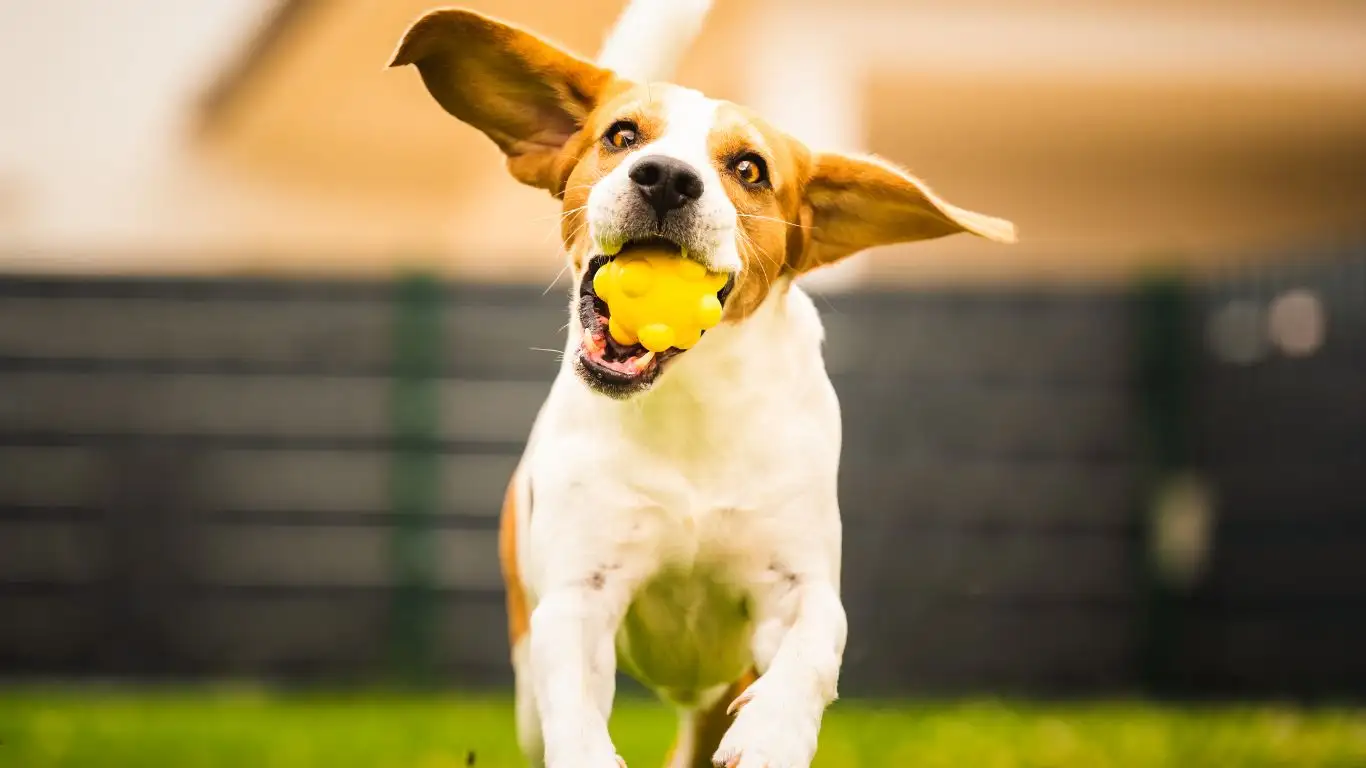
From Daily Life to Public Places
Once your dog consistently stays cool when doors open at home, it’s time to take the training outside. Literally. Real-world environments can throw all kinds of distractions into the mix—kids playing, other dogs, skateboards, mail carriers. The goal is to generalize that calm response to any doorway, not just your front porch.
When I was training Willa, a shepherd mix with an eye on therapy work in pediatric clinics, we took our sessions to hardware store entrances, outdoor cafés, and library lobbies. Why? Because every new doorway was a chance to reinforce her calm mindset. And you know what? She rocked it. By exposing her gradually to more chaotic settings, we gave her the confidence to stay composed no matter what kind of door she faced.
Train for Moments, Not Just Milestones
Progress with door manners doesn’t always look like giant leaps. Sometimes it’s the small wins that matter most: your dog takes one extra second to pause before stepping forward, or chooses to sit without being asked when you grab your keys. Celebrate those!
Here’s a quick rundown of small signs that your training is sticking:
- Your dog starts looking to you for cues at the door
- They pause automatically when the door opens
- They’re less reactive to sounds or movement around doorways
- They hold a sit or down without constant reminders
It’s those micro-moments that build up to calm, reliable behavior you can count on—even in high-stakes therapy environments.
How to Train a Dog to Remain Calm When Doors Open: Final Tips from the Field
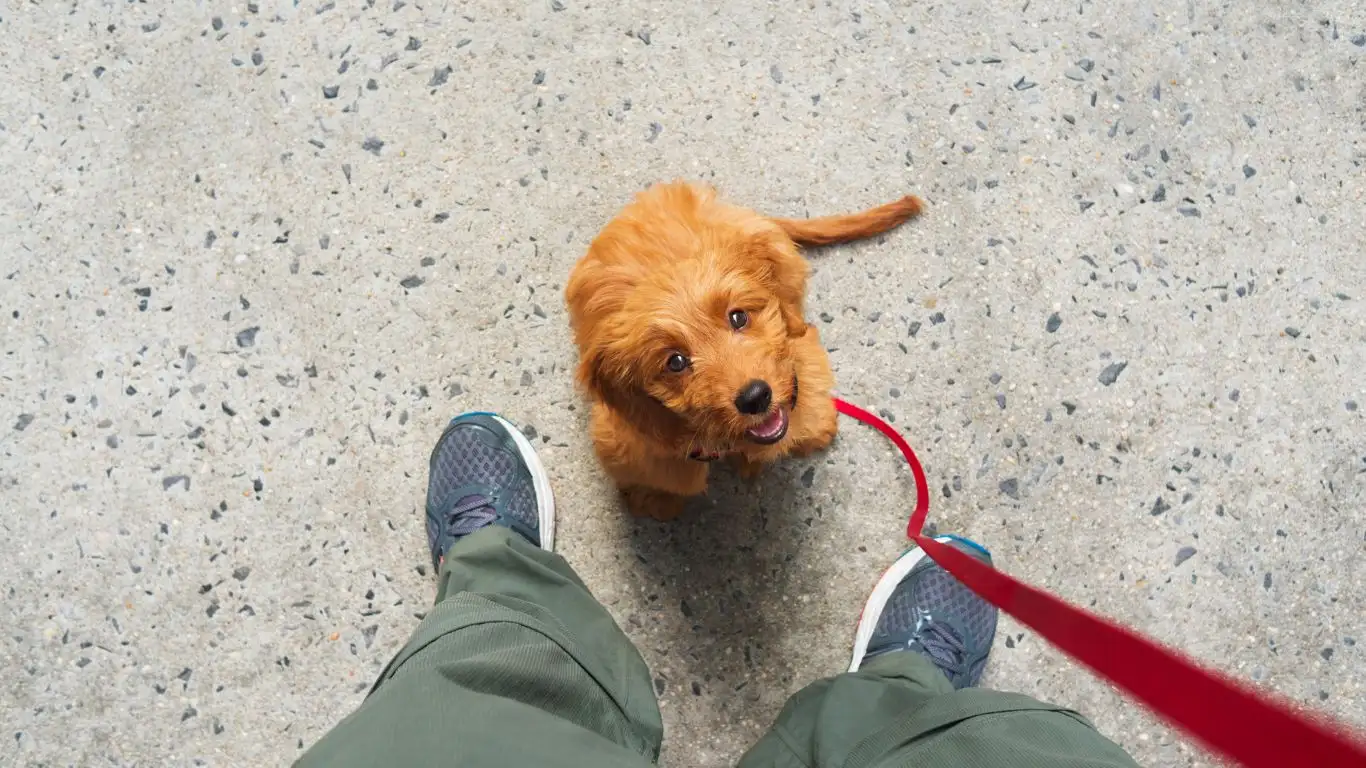
Tailoring Training to Your Dog’s Personality
No two dogs are alike. Some pick up calm door behavior in a weekend. Others need a few months, especially if they’re working through reactivity, anxiety, or just a whole lot of enthusiasm. Don’t sweat it if your dog isn’t on someone else’s timeline. Progress isn’t linear, and what really matters is consistency and clarity.
I’ve worked with a husky named Jet who took six weeks just to stop howling every time someone grabbed the doorknob. That wasn’t a training failure—it was progress layered on patience, and now Jet’s the star of his therapy dog team at a local rehab center.
Make It a Lifestyle, Not a One-Off
Calm door behavior shouldn’t just be a party trick. It’s a mindset you can reinforce throughout your dog’s day:
- Ask for a sit before feeding meals
- Use your release word before play starts
- Pause at thresholds on walks, too—gates, street curbs, even elevators
This approach creates a calm, predictable world where your dog knows how to earn rewards through self-control—and that’s pure gold, especially for working dogs who visit hospitals, schools, or assisted living communities where door manners aren’t just polite, they’re essential.
Building Long-Term Success
Reinforce Regularly
Even after your dog “gets it,” you’ll want to check in on the behavior occasionally. Set up a refresher session once or twice a month, especially if you start noticing old habits creeping back. Behavior is use-it-or-lose-it, and the calm around doors you worked hard for is worth maintaining.
Work with a Trainer If Needed
If you’re stuck, don’t be shy about bringing in help. A certified trainer—especially one familiar with therapy dog requirements—can spot things you might miss. I’ve had dozens of clients tell me that one session with a pro saved them months of frustration. Even better? You’ll learn a few tricks that stick with you for the long haul.
References
Disclaimer
This article is based on my professional experience as a Canine-Assisted Therapy Trainer and is intended for informational purposes only. Every dog is unique, and results may vary depending on your dog’s temperament, history, and training consistency. If your dog exhibits extreme anxiety or behavioral issues, consult a certified professional trainer or veterinary behaviorist for guidance.
